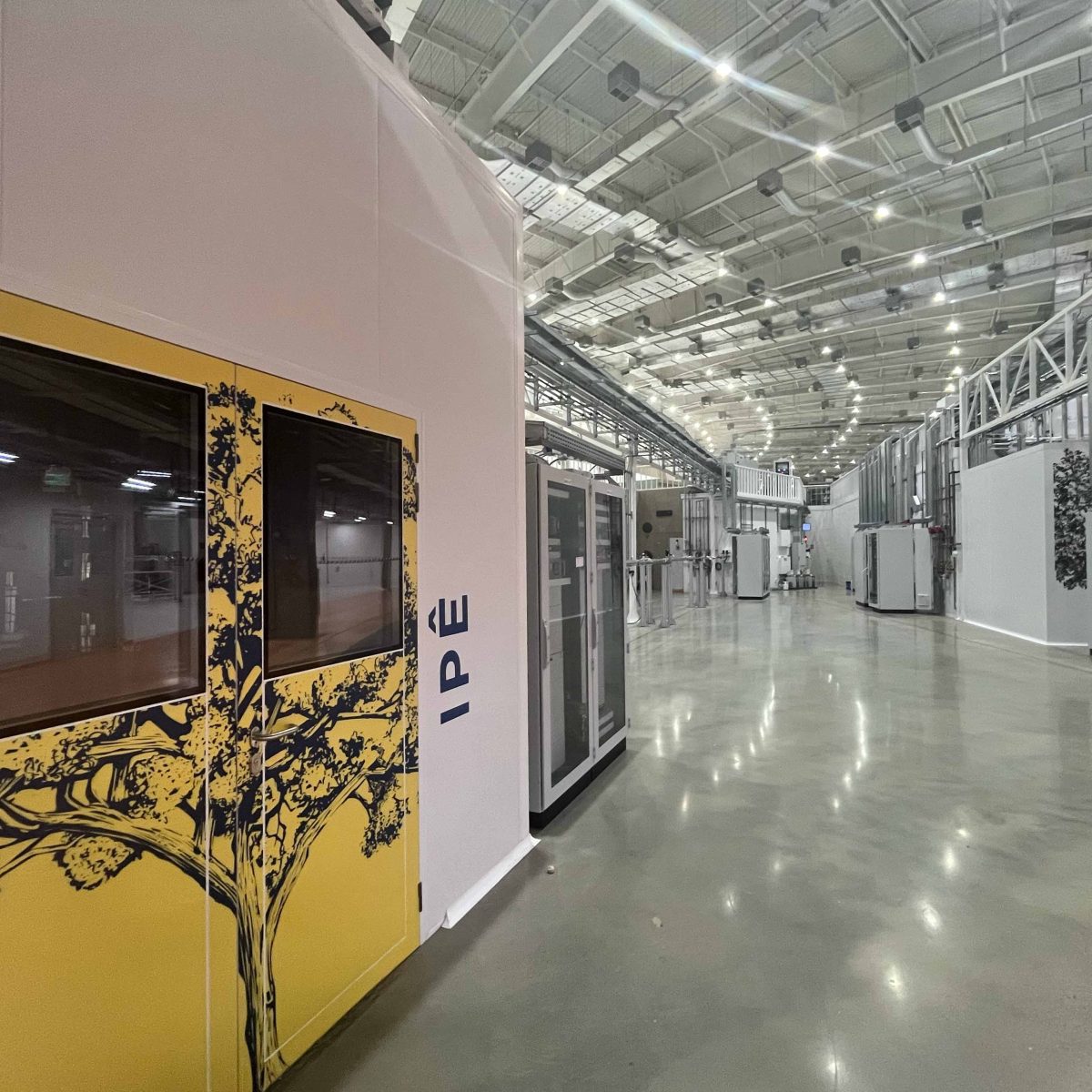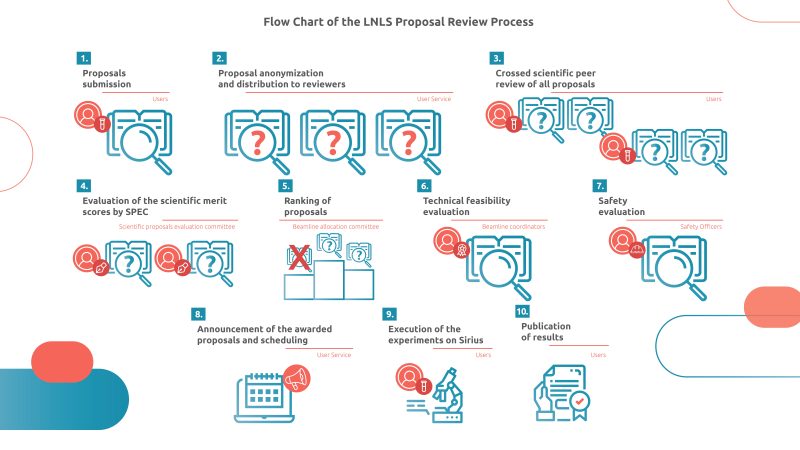
100 new projects will be carried out in the six research stations already open to users in Brazil’s largest scientific infrastructure
The Brazilian Center for Research in Energy and Materials (CNPEM), an organization overseen by the Ministry of Science, Technology and Innovation (MCTI), has released the list of scientific projects selected to be conducted within the research facilities at Sirius, Brazil’s largest and most complex research infrastructure dedicated to analyzing the structure of all types of matter at the micro and nano scales.
One hundred proposals were chosen out of the 281 submitted during the second official call for research projects to be conducted at Sirius during April 3–24 of this year. The selected projects will be carried out during the second half of 2023, between August 2 and December 16.
Nearly a quarter of the proposals were received from new users, namely researchers who have never used the open facilities in any of the four national laboratories that are part of the CNPEM. New users accounted for 15% of the selected proposals.
The selected research projects are concentrated in the areas of materials science and nanotechnology (30%), physics (21%), chemistry (14%), and biology and biotechnology (12%).
Of all the proposals, 241 were submitted by researchers at Brazilian institutions, while the remaining 40 came from foreign scientific institutions. Thanks to the cutting-edge environment at Sirius amid the global scientific context, there were growing numbers of submissions by researchers at scientific institutions in Europe (35%), as well as other Latin American countries (32.5%), North America (15%), Asia (15%), and the Middle East (2.5%).
Researchers at international institutions also accounted for the majority of the selected proposals submitted by new users. Of the selected proposals, 15% were submitted by researchers at institutions in Italy, the United States, China, Argentina, Sweden, and Great Britain.
Starting with the first regular call for proposals to use the beamlines at Sirius, which began late last year, the CNPEM has adopted new evaluation and selection criteria that are more inclusive and collaborative. During the second call, the proposals again were selected in a dual-anonymous peer review process that considers scientific merit.
So that every proposal could be assessed from multiple specialist points of view, a new distributed evaluation system was utilized in which all researchers who submitted projects during that call for proposals also served as potential reviewers within their specialty areas in that same round. At least five reviewers assessed each proposal.
One of the goals of this new process is to eliminate reviewer bias throughout the process, explains Brazilian Synchrotron Light National Laboratory (LNLS) Director Harry Westfahl Jr. “The evaluators do not have access to the names or institutions of the proposing researchers. Gender pronouns are also removed from proposals. To keep the process anonymous, proposal authors are instructed to remove any language that might identify research previously published by the group.”
This anonymized process is also used for research projects submitted by the CNPEM’s own researchers. After the distributed evaluation phase, the process moves to review by the Scientific Proposal Evaluation Committee (SPEC) before the names and other information of the submitting and reviewing researchers are revealed, in order to ensure that the scores assigned by the reviewers are consistent with the opinions they have expressed.

Antonio Gomes Souza Filho, a researcher who is part of this evaluation committee, notes that there have been clear advances and improvements in the process: “The way proposals are submitted facilitates technical peer review (ad-hocs) as well as assessment by the SPEC, by consolidating and comparing all the different proposals for ranking,” he says.
Although data on past selection processes did not indicate significant bias in the evaluations, measures for more transparency and legitimacy in the evaluation process have been discussed and pursued by other international scientific teams.
According to Brunno Albuquerque, manager of the CNPEM’s User Office, other synchrotron light sources around the world have inquired about the new process. “It is very motivating to know that our ideas are being seen as examples by other institutions, and we will continue to innovate as we search for the most inclusive method for users in Brazil, Latin America, and around the world.”
Designed and built by Brazilians and funded by the Ministry of Science, Technology, and Innovation (MCTI), Sirius is one of the most advanced synchrotron light sources in the world. This huge assembly of equipment centers around a state-of-the-art electron accelerator which produces a type of light that can reveal the microscopic structure of organic and inorganic materials. These analyses are conducted in research stations called beamlines. Sirius contains various beamlines which are optimized for different kinds of experiments that function independently, allowing several groups of researchers to work simultaneously on different studies in a variety of areas like health, energy, new materials, and the environment.
The different experimental techniques offered by the beamlines at Sirius make it possible to observe microscopic aspects of materials like the atoms and molecules they contain, their chemical states and spatial organization, as well as to monitor changes over time in physical, chemical, and biological processes that take place in fractions of a second. Beamlines can also allow researchers to see the resulting changes when the materials are subjected to different conditions like high temperature, mechanical stress, pressure, electrical or magnetic fields, or corrosive environments. This is one of the main advantages of synchrotron light sources over other experimental high-resolution techniques.
The beamlines at Sirius are advanced scientific instruments that were designed to solve problems in strategic areas for Brazilian development. Six beamlines are now available to the scientific and technological community, within a group of 14 lines originally planned to cover a wide variety of scientific projects. Sirius can house a total of up to 38 beamlines.
A sophisticated and ebullient environment for research and development that is the only one of its kind in Brazil and found in only a few scientific centers in the world, the Brazilian Center for Research in Energy and Materials (CNPEM) is a private, non-profit organization overseen by the Ministry of Science, Technology, and Innovation (MCTI). The Center operates four national laboratories and is home to Sirius, the most complex project in Brazilian science and one of the world’s most advanced synchrotron light sources. The CNPEM is home to highly specialized multi-thematic teams, globally competitive lab infrastructure that is open to the scientific community, strategic lines of research, innovative projects in partnerships with the productive sector, and training for researchers and students. The Center is an environment driven by research into solutions that impact the areas of health, energy and renewable materials, agri-environmental, and quantum technologies. Immersive virtual visits are available for all the laboratories in Campinas (SP), along with information about the work conducted there and the resources available to the scientific and business communities. In 2022, with support from the Brazilian Ministry of Education (MEC), the CNPEM expanded its activities with the opening of the Ilum School of Science. This interdisciplinary undergraduate program in science, technology, and innovation implements innovative ideas to provide a high quality free and full-time educational experience immersed in the research environment at the CNPEM.
First research conducted during the commissioning period of the Sirius beamline dedicated to X-ray micro and nanotomography seeks to investigate a bacterium-associated vascular disease of citrus
Arrival of the UV beam is a milestone in the commissioning process